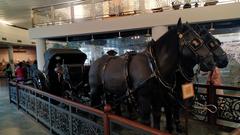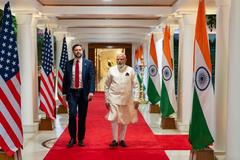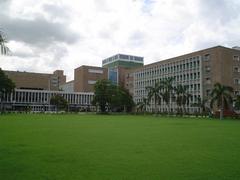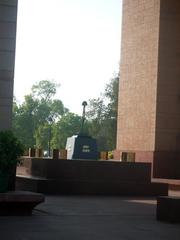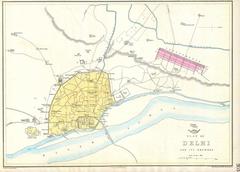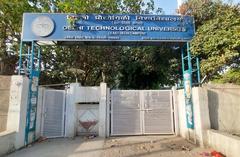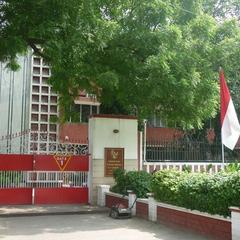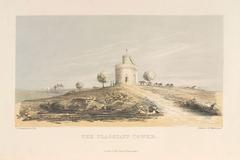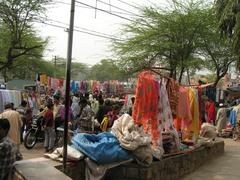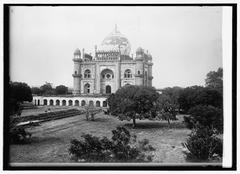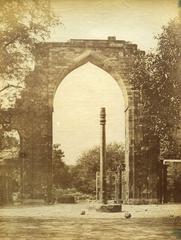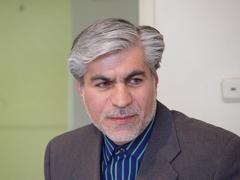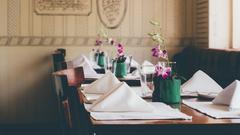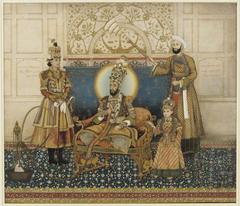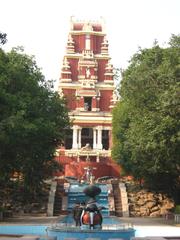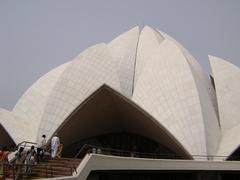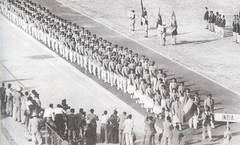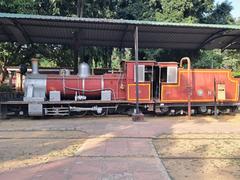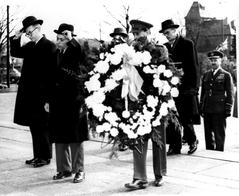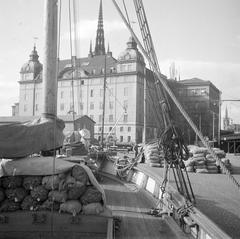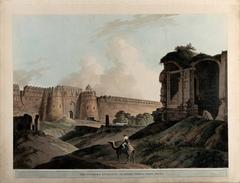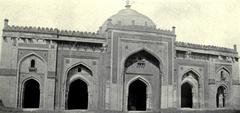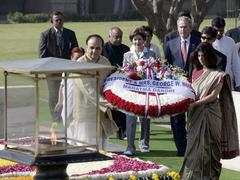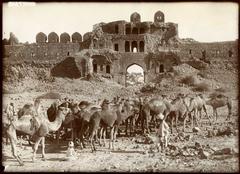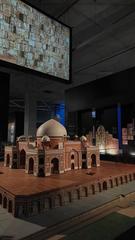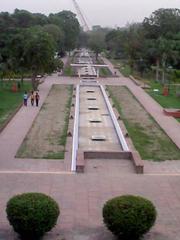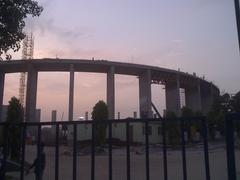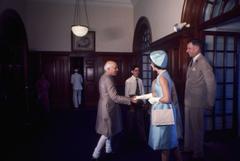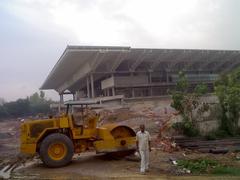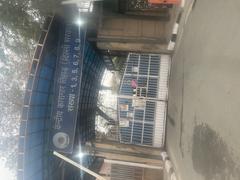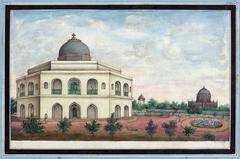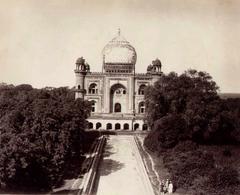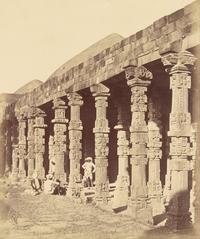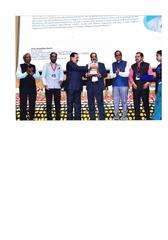
Rashtrapati Bhavan Visitor Information and Guide
Date: 17/07/2024
Introduction
Rashtrapati Bhavan, located in the heart of New Delhi, India, stands as a monumental symbol of the country’s rich cultural heritage and historical significance. Originally constructed as the Viceroy’s House during the British colonial era, it has since become the official residence of the President of India. Designed by the renowned British architect Sir Edwin Lutyens, Rashtrapati Bhavan epitomizes a blend of classical Western and Indian architectural elements, making it an architectural marvel (India Today, Architectural Digest). Covering an expansive area of 330 acres, it houses 340 rooms, including the President’s official residence, guest rooms, offices, and reception halls. The Mughal Gardens, located at the back of the building, further enhance its grandeur with their exquisite blend of British and Mughal gardening styles (The Hindu, Times of India).
Since its transformation from the Viceroy’s House to Rashtrapati Bhavan post-independence, it has played a central role in India’s political and ceremonial life, hosting state functions, official ceremonies, and visiting dignitaries. The building not only represents the country’s journey from colonial rule to sovereignty but also symbolizes India’s unity and diversity (President of India, NDTV). This guide provides an in-depth look into the history, architectural significance, and visitor information for Rashtrapati Bhavan, ensuring a comprehensive understanding and unforgettable visit.
Table of Contents
- Introduction
- History of Rashtrapati Bhavan
- Visitor Information
- Public Access and Visitor Experience
- FAQ Section
- Conclusion
History of Rashtrapati Bhavan
Origins and Construction
Rashtrapati Bhavan, originally known as the Viceroy’s House, was constructed during the British colonial era. The decision to build a new administrative capital for British India in New Delhi was made in 1911, and the foundation stone was laid by King George V. The construction of Rashtrapati Bhavan began in 1912 and was completed in 1929. The building was designed by British architect Sir Edwin Lutyens, who played a pivotal role in the planning and construction of New Delhi. The architectural style of Rashtrapati Bhavan is a blend of Western and Indian elements, reflecting the colonial and indigenous influences of the time (India Today).
Architectural Significance
Rashtrapati Bhavan is an architectural marvel, covering an area of 330 acres. The main building has four floors and 340 rooms, including the President’s official residence, guest rooms, offices, and reception halls. The building’s design incorporates classical Western elements such as columns and domes, as well as Indian motifs like chhatris (elevated, dome-shaped pavilions) and jaalis (lattice screens). The Mughal Gardens, located at the back of the building, are a significant feature, showcasing a blend of British and Mughal gardening styles (Architectural Digest).
Role During British Rule
During the British colonial period, Rashtrapati Bhavan served as the residence of the Viceroy of India, the highest official in British India. The building was the center of British administrative power and hosted numerous important events and dignitaries. It symbolized the British Empire’s authority and grandeur in India. The Viceroy’s House was the site of many significant decisions and events, including the transfer of power from British to Indian hands in 1947 (The Hindu).
Post-Independence Transformation
After India gained independence in 1947, the Viceroy’s House was renamed Rashtrapati Bhavan, meaning “President’s House” in Hindi. It became the official residence of the President of India, the ceremonial head of state. The first President to reside in Rashtrapati Bhavan was Dr. Rajendra Prasad. Since then, it has been the residence of all subsequent Presidents of India. The building has continued to play a central role in India’s political and ceremonial life, hosting state functions, official ceremonies, and visiting dignitaries (President of India).
Restoration and Preservation Efforts
Over the years, Rashtrapati Bhavan has undergone several restoration and preservation efforts to maintain its architectural integrity and historical significance. In recent years, extensive renovation work has been carried out to restore the building’s original features and ensure its structural stability. These efforts have included the restoration of the Mughal Gardens, the renovation of the main building, and the preservation of historical artifacts and artworks housed within Rashtrapati Bhavan (NDTV).
Cultural and Historical Significance
Rashtrapati Bhavan is not only an architectural masterpiece but also a symbol of India’s rich cultural and historical heritage. It represents the country’s journey from colonial rule to independence and its emergence as a democratic republic. The building is a testament to the vision and craftsmanship of its architects and builders, as well as the resilience and determination of the Indian people. Rashtrapati Bhavan continues to be a site of national pride and a symbol of India’s unity and diversity (Times of India).
Visitor Information
Booking and Timings
Visitors need to book their visit in advance through the official Rashtrapati Bhavan website. The visiting hours are typically from 9:00 AM to 4:00 PM, with specific days allocated for different circuits. Ticket prices vary depending on the circuit and category (adults, children, etc.). For the latest information on ticket prices and booking, visit the Rashtrapati Bhavan official website.
Security and Regulations
Due to the high-security nature of the site, visitors are required to undergo security checks. Photography is restricted in certain areas, and visitors are advised to follow the guidelines provided by the authorities. Carrying identification and adhering to the dress code are mandatory.
Best Time to Visit
The best time to visit Rashtrapati Bhavan is during the winter months (November to February) when the weather is pleasant, and the Mughal Gardens are in full bloom. This period offers a more comfortable and enjoyable experience.
Guided Tours
Guided tours are available and highly recommended for a comprehensive understanding of the history and significance of Rashtrapati Bhavan. These tours are conducted by knowledgeable guides who provide detailed insights into the building’s architecture, history, and cultural importance. Booking a guided tour in advance is advisable.
Public Access and Visitor Experience
Rashtrapati Bhavan is open to the public, allowing visitors to explore its grandeur and learn about its history. The building is divided into three circuits for public viewing:
- Circuit 1: Includes the main building, the reception halls, and the presidential residence.
- Circuit 2: Covers the Mughal Gardens, which are open to the public during specific months of the year.
- Circuit 3: Includes the Rashtrapati Bhavan Museum, which houses a collection of artifacts, photographs, and documents related to the history of Rashtrapati Bhavan and the Presidents of India (Rashtrapati Bhavan).
FAQ Section
What are the visiting hours for Rashtrapati Bhavan?
The visiting hours are typically from 9:00 AM to 4:00 PM. Specific days are allocated for different circuits. For precise timings, refer to the official website.
How can I book tickets to visit Rashtrapati Bhavan?
Tickets can be booked in advance through the Rashtrapati Bhavan official website. Ensure to check the latest prices and availability.
Are there any restrictions on photography at Rashtrapati Bhavan?
Yes, photography is restricted in certain areas due to security reasons. Visitors should adhere to the guidelines provided by the authorities.
What are the best months to visit Rashtrapati Bhavan?
The best months to visit are from November to February when the weather is pleasant and the Mughal Gardens are in full bloom.
Conclusion
Rashtrapati Bhavan stands as a monumental symbol of India’s historical journey, architectural brilliance, and cultural heritage. Its rich history, from its origins as the Viceroy’s House to its current status as the President’s residence, reflects the country’s evolution and resilience. Visitors to Rashtrapati Bhavan can immerse themselves in its grandeur, explore its historical significance, and gain a deeper appreciation for India’s rich cultural legacy. For more updates and information, follow us on social media or download the mobile app Audiala.
References
- India Today (n.d.). Visiting Rashtrapati Bhavan - History, Tickets, and Visitor Tips. Retrieved from India Today
- Architectural Digest (n.d.). Rashtrapati Bhavan: History and Architecture. Retrieved from Architectural Digest
- The Hindu (n.d.). Rashtrapati Bhavan: A Symbol of India’s Democracy. Retrieved from The Hindu
- Times of India (n.d.). Rashtrapati Bhavan: Cultural and Historical Significance. Retrieved from Times of India
- President of India (n.d.). Rashtrapati Bhavan. Retrieved from President of India
- NDTV (n.d.). Rashtrapati Bhavan: Restoration and Preservation Efforts. Retrieved from NDTV

